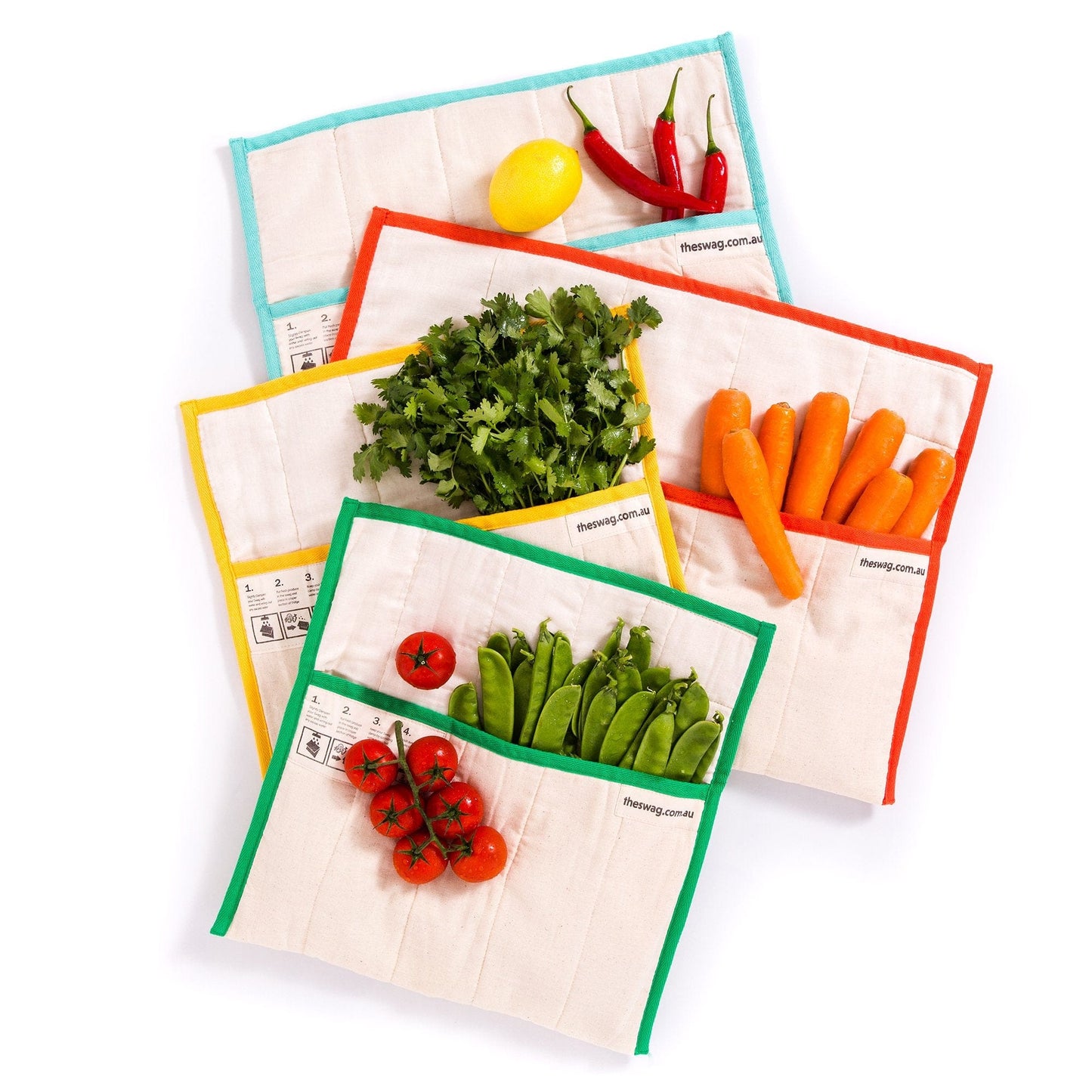In the bustling aisles of supermarkets and among the rush of the weekly shop, it’s easy to lose sight of where our food comes from. With produce flown in from distant lands year-round, the concept of seasonality seems to blur into the background. However, there’s a powerful case to be made for going back to basics in our food system and embracing the virtues of eating seasonal and local produce. Within this article, we will outline the key benefits and why doing so is not only good for our planet, but your health and your wallet too. A win all round! Plus, find a delicious recipe at the bottom, helping you to enjoy your seasonal produce to the maximum.
The Key Benefits of Eating Seasonally & Locally
Taste The Difference
Picture this: a crisp apple picked at the peak of its ripeness, bursting with flavour and nutrients. Now, contrast that with a fruit that's travelled hundreds or even thousands of miles before reaching your plate. The difference in taste and nutritional content is palpable. Seasonal produce is harvested at its prime, meaning it’s packed with essential vitamins, minerals, and antioxidants - not only better for you but better for the taste. Eating seasonally ensures you’re getting the freshest and juiciest produce available. There’s a reason why chefs and food enthusiasts swear by the flavour of seasonal ingredients. Whether it’s the sweetness of summer berries, the earthiness of fall squash, or the tanginess of winter citrus, seasonal produce offers a diverse and dynamic palette of flavours. By eating with the seasons, you’ll discover a whole new world of taste sensations that simply can’t be replicated with out-of-season produce.
Nutritional Benefits
When fruits and vegetables are in season, they are naturally at their nutritional peak. Studies have shown that produce harvested at its peak tends to retain more nutrients compared to produce that’s been stored or transported over long distances. For instance, a ripe, juicy tomato picked in the summer months contains higher levels of antioxidants like lycopene, which has been linked to various health benefits including reducing the risk of certain cancers and heart disease. Similarly, vibrant berries like strawberries, blueberries, and raspberries, which thrive in the summer sun, are not only bursting with flavour but also loaded with antioxidants such as flavonoids and anthocyanins. These compounds have been linked to improved cognitive function, reduced inflammation, and a lower risk of chronic diseases such as Alzheimer's and cardiovascular disease. By focusing on seasonal and local produce, you can optimise your nutrient intake and reap the numerous health benefits associated with a diet rich in fresh fruits and vegetables. From boosting immunity and supporting heart health to promoting healthy ageing and maintaining a healthy weight, the advantages of embracing seasonal eating extend far beyond just flavour and freshness.
Environmental Impact
Choosing seasonal and local produce not only benefits personal health but also contributes positively to the environment in several ways. By opting for locally grown fruits and vegetables, you're effectively reducing the carbon footprint associated with transportation. This means fewer emissions from vehicles used to transport produce over long distances, resulting in lower greenhouse gas emissions and less pollution.
Moreover, seasonal produce tends to require fewer artificial inputs like pesticides and fertilisers compared to out-of-season varieties that may need extra assistance to thrive in non-native climates. By supporting local farmers who prioritise sustainable farming practices, you're not only reducing the use of harmful chemicals but also promoting soil health and biodiversity.
Additionally, buying from local farmers helps preserve green spaces and agricultural lands in your region. By supporting small-scale farming operations, you're contributing to the maintenance of rural landscapes and preventing the conversion of farmland into urban developments or industrial zones. This preservation of agricultural land is crucial for maintaining ecosystem services, such as water filtration, soil conservation, and habitat preservation, which are vital for supporting biodiversity and wildlife in your area. By making conscious choices about where your food comes from, you can play a part in creating a healthier planet for current and future generations.
Budget-Friendly Eating
One of the most compelling arguments for choosing seasonal and local produce is the impact it can have on your wallet. When fruits and vegetables are in season, they are typically more abundant, which means there is a higher supply and lower demand. This abundance often translates to lower prices, making seasonal produce a more budget-friendly option for consumers. Shopping at local farmers' markets allows you to tap into this abundance and enjoy fresh, high-quality produce at a fraction of the cost you would pay for imported or out-of-season items at the supermarket. By cutting out the middleman and purchasing directly from local farmers, you can often find better deals and support your local economy at the same time.
Additionally, buying seasonal and local produce can also help you save money in the long run by encouraging meal planning and reducing food waste. When you buy what's in season, you're more likely to consume it when it's at its freshest and most flavourful, reducing the likelihood of the produce spoiling before you have a chance to use it. This can translate to significant savings over time as you minimise the amount of food that ends up in the trash.
Community Connection
Finally, eating local produce fosters a sense of connection to your community and the people who grow your food. By supporting local farmers, you’re investing in the livelihoods of your neighbours and strengthening the local economy. It’s a win-win scenario that not only benefits your health and your wallet but also builds stronger, more resilient communities.
In conclusion, there are countless reasons to embrace the seasonal and local food movement. In essence, choosing seasonal and local produce isn't just about the environmental advantages and supporting local farmers. It's also a smart financial decision that can help stretch your grocery budget further while still nourishing your body with wholesome, delicious and nutritious foods. Opting for fresh and local produce is a simple yet powerful way to support your health and the planet. So next time you’re at the market, take a moment to consider where your food comes from and choose the seasonal option - it’s good for you, your community, and the world around you.
Don’t forget to keep your produce fresh for WEEKS with a Swag bag.
Head to our recent blog for more tips on how to keep your produce fresh in the summer.
Recipe: Roasted Butternut Squash Soup

Ingredients:
- 1 medium-sized butternut squash, peeled, seeded, and cubed
- 1 onion, chopped
- 2 carrots, peeled and chopped
- 2 cloves garlic, minced
- 4 cups vegetable broth
- 1 teaspoon dried thyme
- 1/2 teaspoon ground cinnamon
- Salt and pepper to taste
- Olive oil for roasting
- Optional toppings: toasted pumpkin seeds, a drizzle of cream, chopped fresh parsley
Instructions:
- Preheat your oven to 400°F (200°C).
- Place the cubed butternut squash, chopped onion, and carrots on a baking sheet. Drizzle with olive oil and season with salt and pepper. Toss to coat evenly.
- Roast the vegetables in the preheated oven for 25-30 minutes, or until they are tender and caramelised, stirring halfway through.
- In a large pot, heat a tablespoon of olive oil over medium heat. Add the minced garlic and sauté for 1-2 minutes, until fragrant.
- Add the roasted vegetables to the pot, along with the vegetable broth, dried thyme, and ground cinnamon. Bring the mixture to a simmer.
- Let the soup simmer for 15-20 minutes, allowing the flavours to meld together.
- Using an immersion blender or regular blender, carefully puree the soup until smooth and creamy.
- Season the soup with additional salt and pepper to taste, if needed.
- Serve the roasted butternut squash soup hot, garnished with toasted pumpkin seeds, a drizzle of cream, and chopped fresh parsley for added flavour and texture.
- Enjoy this comforting autumnal soup as a starter or light meal, paired with crusty bread or a side salad. It's the perfect way to warm up on a chilly fall day!



